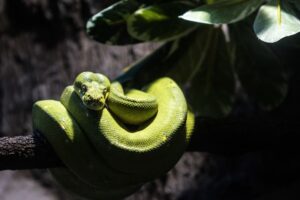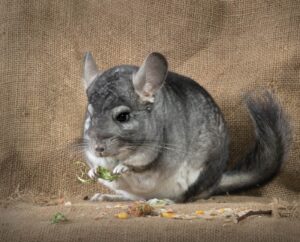Table of Contents
ToggleIntroduction
Axolotls, the curious and unique creatures often referred to as “Mexican walking fish,” have captured the fascination of both scientists and animal enthusiasts for decades. With their charming appearance and remarkable regenerative abilities, axolotls have become a popular subject of study in biology. Do Axolotls Have Teeth? Axolotls do possess both upper and lower canine teeth. You don’t need to be concerned about getting bit by your axe because axolotl fangs aren’t sharp enough to puncture the skin or inflict any major damage.
Dental Anatomy Of Axolotls
Axolotls do have a unique set of structures that serve a purpose similar to teeth. But scientifically speaking, we can’t call them teeth. Axolotls possess two main structures that assist in capturing and consuming their prey: vomerine teeth and maxillary teeth.
Vomerine Teeth
Vomerine teeth are tiny, sharp, and conical structures located on the roof of an axolotl’s mouth. Many people refer to these forms as “vomerine odontodes.” Several different kinds of aquatic creatures have teeth-like structures called odontodes. Axolotls use their vomerine teeth to catch and hold their prey, mostly of small marine creatures, including fish, insects, and crustaceans.
While these vomerine teeth are not true teeth in the mammalian or reptilian sense, they serve a similar function. Axolotls use their vomerine teeth to grasp and immobilize their prey before swallowing it whole. These teeth-like structures allow axolotls to be effective predators in their aquatic habitat.
Maxillary Teeth
In addition to vomerine teeth, axolotls have another structure called maxillary teeth. Maxillary teeth are small, conical projections located on the upper jaw of the axolotl. They are longer and more pronounced than the vomerine teeth.
Maxillary teeth also play a crucial role in the axolotl’s feeding process. When the axolotl captures its prey with its vomerine teeth, it further secures the prey in its mouth using the maxillary teeth. These teeth help in positioning the prey for effective ingestion.
While maxillary and vomerine teeth are not typical mammalian molars or incisors, they are essential for the axolotl’s predatory behavior and contribute to its ability to capture and consume food.
How Big Are The Teeth Of An Axolotl?
The teeth of an axolotl are not very large, and if the animal is sufficiently far enough, you won’t even be able to see them. You are not advised to open their mouth to look at their teeth since they may bite you. The teeth of an axolotl are small and blunt.
They have teeth that they utilize to grab the food they eat, unlike other animals that use their teeth to chew the food. Even though most of the axolotl’s diet consists of soft and tender foods, this animal does not use its teeth to make eating easier.
The fact that many axolotl owners are unaware that their pets even have teeth lends credence to the notion that axolotls have teeth that are extremely minute and practically undetectable. We also don’t know when axolotls lose their teeth because axolotls can regenerate their teeth if any of them fall out. It makes it difficult for us to determine when they lose their teeth.
The Role Of Axolotl Teeth In Feeding
The presence of teeth in axolotls is closely linked to their dietary preferences and feeding habits. These teeth serve several crucial functions in the feeding process:
Grasping Prey
Vomerine teeth at the back of the mouth act as anchor points for holding onto prey. When an axolotl captures a small animal, it uses these teeth to secure the prey in its mouth.
Tearing and Crushing
Premaxillary teeth near the front of the mouth are responsible for tearing apart and crushing prey items. It helps in breaking down the prey into smaller, more digestible pieces.
Efficient Feeding
Axolotls are efficient feeders, largely due to their well-adapted dental structures. Their teeth enable them to consume a wide range of prey, including insects, small fish, and aquatic invertebrates, which is crucial for survival in the wild.
Self-Maintenance
The regenerative ability of axolotl teeth ensures that they can continually replace lost or damaged teeth, thus preventing any disruptions in their feeding patterns. This self-maintenance feature allows axolotls to remain well-equipped for hunting. Axolotl teeth enable these amphibians to capture, consume, and process their prey efficiently.
Can An Axolotl Bite?
This animal is known for biting, either to scare off an intruder or when they are hunting. Sometimes, they will bite, but most of the time, they won’t go after people unless they think you are a threat.
Bites from tankmates
Because axolotls have been known to eat each other, especially when axolotls of different sizes are kept together, it’s important to take the right measures and steps to keep this from happening.
Biting people
Axolotls aren’t even after you, so don’t worry that they might try to bite you. They most commonly do this because they think their moving fingers in the tank are live worms. These guys will naturally bite anything that moves in their tank, but you shouldn’t worry because their bites won’t hurt you at all.
They don’t even have poison, their mouths aren’t strong enough to leave more than a small mark on your skin, and their bites don’t hurt and feel like rubbery sandpaper. As with all frogs, the only thing that could go wrong with an axolotl bite is getting salmonella. It is because the bites are very unlikely even to bleed, so salmonella is the only thing that could go wrong.
How Many Teeth Do Axolotls Have?
Although axolotl teeth are perfectly organized in both their upper and lower jaws, it is not yet possible to determine how many teeth an adult axolotl will have. More than 50 teeth are in the upper or lower jaw alone, depending on how the numbers are counted.
Since the upper and lower jaws have the same number of teeth, axolotls are assumed to have between one hundred and more than one hundred teeth. Do axolotls have teeth that are well-spaced out in their mouths? It is simple for the axolotl to regrow its teeth because they are weak. It is because the axolotl has teeth that are prone to breaking quickly.
Conclusion
With their remarkable dental structures, Axolotls exemplify the diversity of adaptations in the animal kingdom and offer a window into the exciting realms of regenerative biology, genetics, and developmental biology. These endearing aquatic salamanders continue to inspire. And educate researchers and enthusiasts alike, shedding light on the secrets of their remarkable existence.







